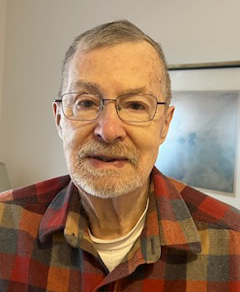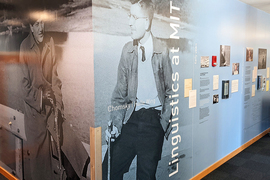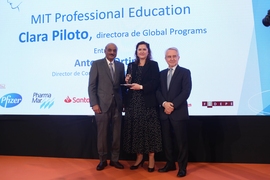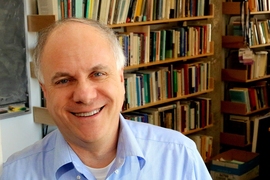James Wesley “Jim” Harris PhD ’67, professor emeritus of Spanish and linguistics, passed away on Nov. 10. He was 92.
Harris attended the University of Georgia, the Instituto Tecnológico de Estudios Superiores de Monterrey, and the Universidad Nacional Autónoma de México. He later earned a master’s degree in linguistics from Louisiana State University and a PhD in linguistics from MIT.
Harris joined the MIT faculty as an assistant professor in 1967, where he remained until his retirement in 1996. During his tenure, he served as head of what was then called the Department of Foreign Languages and Literatures.
“I met Jim when I came to MIT in 1977 as department head of the neonatal Department of Linguistics and Philosophy,” says Samuel Jay Keyser, MIT professor emeritus of linguistics. “Throughout his career in the department, he never relinquished his connection to the unit that first employed him at MIT.”
In his early days at MIT, when French, German, and Russian dominated as elite “languages of science and world literature,” Harris championed, over some opposition, the introduction of Spanish language and literature courses.
He later oversaw the inclusion of Japanese and Chinese courses as language offerings at MIT. He promoted undergraduate courses in linguistics, leading to a full undergraduate degree program and later broadening the focus of the prestigious PhD program.
His research in linguistics centered on theoretical phonology and morphology. His books, presentations at professional meetings, and articles in peer-reviewed journals were among the most discussed — in both positive and negative assessments, as he noted — by prominent scholars in the field. The ability to teach complex technical material comfortably in Spanish, plus the status of an MIT professorship, resulted in invitations to teach at universities across Spain and Latin America. He was also highly valued as a member of the editorial boards of several professional journals.
“I remember Jim most of all for being the consummate scholar,” Keyser says. “His articles were models of argumentation. They were assembled with all the precision of an Inca wall and all the beauty of a Faberge Egg. You couldn’t slip a credit card through any of its arguments, they were so superbly sculpted.”
Having achieved national recognition as an English-Spanish bilingual teacher and teacher-trainer, Harris was engaged as a writer at the Modern Language Materials Development Center in New York. Later, he co-authored, with Guillermo Segreda, a series of popular college-level Spanish textbooks.
“Harris belonged to Noam Chomsky and Morris Halle’s first generation of graduate students,” says MIT linguist Michael John Kenstowicz. “Together they overturned the distributionalist model of the structuralists in favor of ordered generative rules.”
After retiring from MIT, he remained internationally recognized as a highly influential figure in the area of Romance linguistics, and “el decano” (“the dean”) of Spanish phonology.
Harris was married to Florence Warshawsky Harris for 50 years until her passing in 2020. In 2011, in celebration of the program’s 50th anniversary, they partnered to prepare and publish a detailed history of the linguistics program’s origins. Warshawsky Harris, formerly an MIT graduate student, also edited Chomsky and Halle’s influential "The Sound Pattern of English" and numerous other important linguistic texts.
Harris’ scholarship was widely recognized in a diverse group of scholarly articles and textbooks he authored, co-authored, edited, and published.
Harris was born outside Atlanta, Georgia, in 1932. During the Korean War, he performed his military service as the clarinet and saxophone instructor at the U.S. Naval School of Music in Washington. After his discharge, he directed the band at the Charlotte Hall School in Maryland, where he also taught Spanish, French, and Latin.
Harris is survived by his daughter, Lynn Corinne Harris, his son-in-law, Rabbi David Adelson, and his grandchildren, Bee Adelson and Sam Harris.









